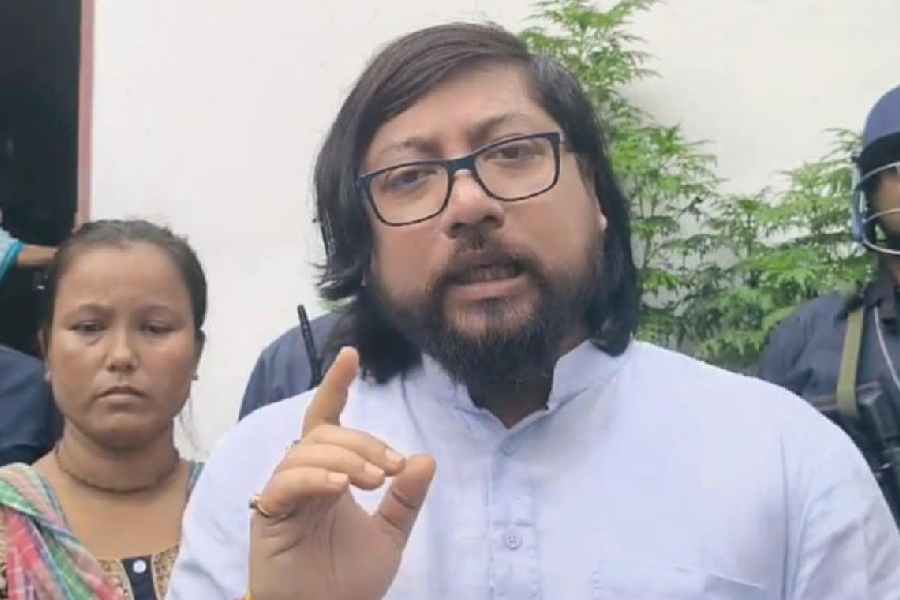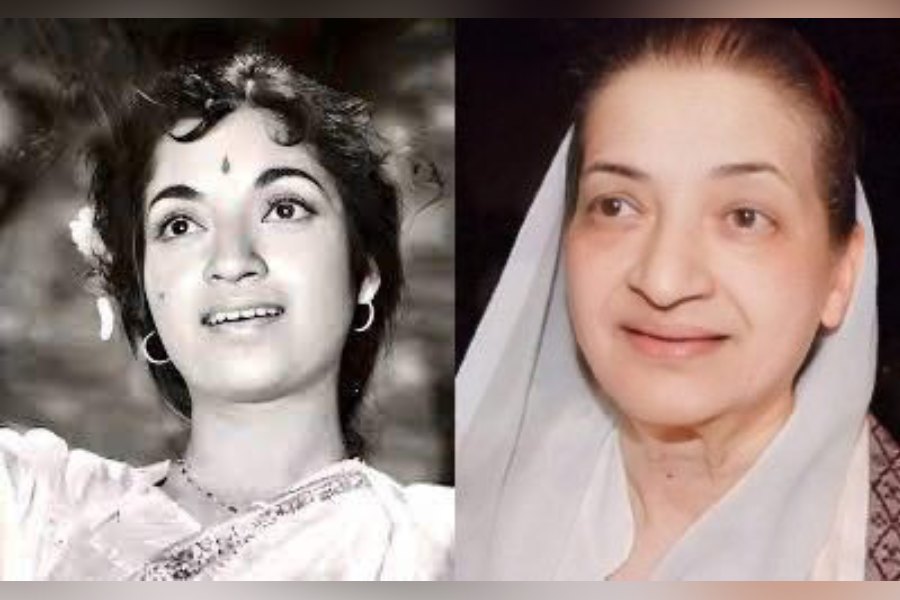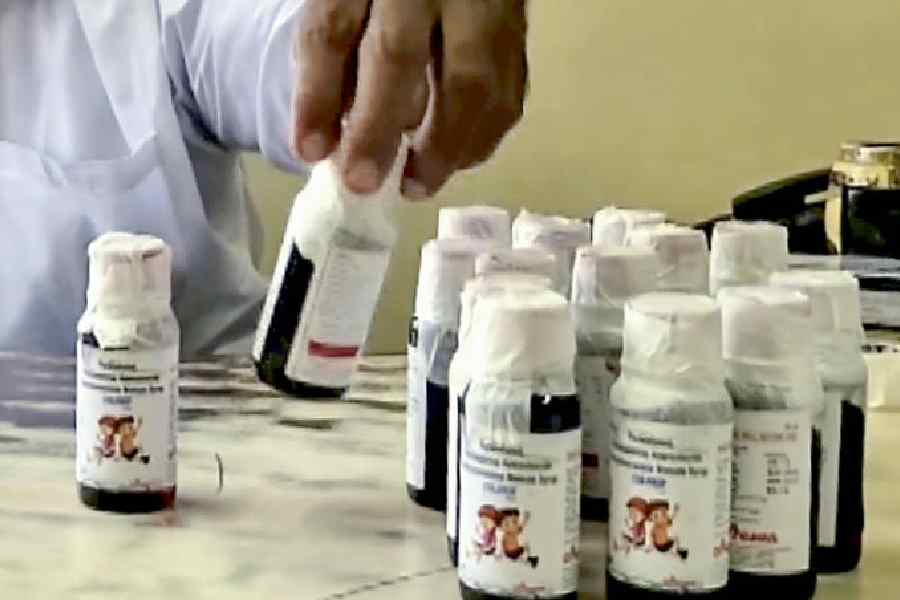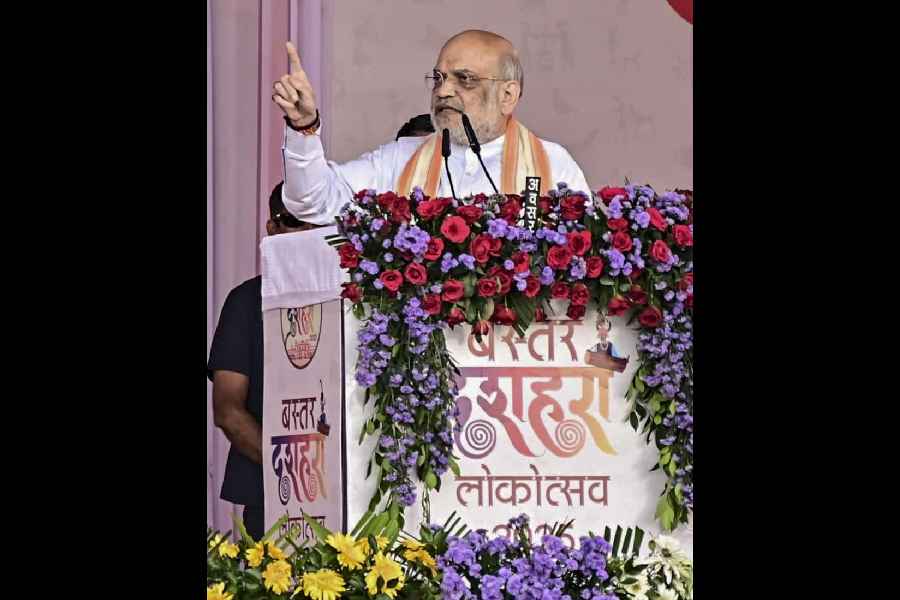
Patna, Feb. 23: Bihar today claimed to have vaulted to the top of the league tables for economic growth in states after rejigging the yardstick for measurement through a base year change but the assertion ran smack into a competing claim from Bengal, which means the jury is still out on who should hold the bragging rights.
"The overall economy of Bihar has grown at 7.6 per cent, higher than the national growth average of 7.1 per cent. We are the fastest-growing state in India," asserted finance minister Abdul Bari Siddiqui who tabled the state's Economic Survey for 2016-17 in the Assembly on Thursday.
Bihar clambered up the growth charts after changing the base year for the measurement of gross state domestic product (GSDP) to 2011-12 from 2004-05. As a result, the GSDP for Bihar has jumped to Rs 4.4 lakh crore in 2015-16.
The Centre was the first to change the base year to 2011-12 from 2004-05 - the switch being made in January 2015. The Central Statistics Office (CSO) also introduced the concept of gross value added (GVA) as the measure for economic growth based on industry-wise estimates, in line with international practice.
Bengal also changed the base year to 2011-12 last year and introduced its own measure of GVA without publicising its methodology, unlike the CSO. On February 10, Bengal finance minister Amit Mitra released Bengal's Economic Survey that a gross state value added growth of 8.99 per cent against the national growth of 7 per cent.
Bengal also put out a measure of its GSDP growth in 2016-17 at 9.27 per cent - which, on the face of it, is higher than Bihar's growth rate.
But Bihar's claims are also complicated by the fact that all the figures quoted in the economic survey relate to the previous year (2015-16).
Bihar used to clock a growth rate of over 10 per cent in previous economic surveys. Explaining the reason for the change, economist and member-secretary of Asian Development Research Institute Shaibal Gupta, who plays a key role in bringing out the survey, said this year the yardstick for measurement has changed. "Previously the base year was 2005-6. This time the base year is 2011-12," Gupta said, stressing that economic parameters indicate that the economy of the state was on track.
The survey points out that per capita income in Bihar was 35 per cent of the national average in 2015-16 compared to 33 per cent in 2011-12.
The survey points out that growth rate of manufacturing was increasing at more than 17 per cent; electricity gas and water supply at 15 per cent; and trade, hotels and restaurants at 14.6 per cent. Along with transport, storage and communication, these sectors are the drivers of growth of the Bihar economy. It also claims an increase in revenue surplus to over Rs 12,500 crore, the highest for the state so far. The survey states that the state's public debt was Rs 88,829 crore, which means that the debt-GSDP ratio is well below 25 per cent specified by the 14th finance commission. The tax revenue of the state has increased by about 19 per cent annually since 2011-12 and stood at Rs 25,449 crore in 2015-16.
While claiming that Bihar produced total cereal of 140.9 tonnes in agriculture, the state claims a growth of over 25 per cent in milk production from 2011-12 to 2015-16. Similarly, there has been an increase of over 32 per cent in production of eggs and peak production of 5.07 tonnes of fish.
Bihar, being an agriculture-dominated state, relies on farming and allied business to give a thrust to the GDP.
In the industrial sector, the state claims there was a growth of 39.4 per cent between 2005 and 2013 and it had over 17 lakh economic enterprises.
The main thrust remains agro-based industries and the number of food processing units in Bihar in 2013 was put at 399 which together employ more than 48,000 people. In the tourism sector the number of foreign tourists has remained almost stagnant at around 9,23,000 annually. The survey claims there has been a growth of 50 per cent in domestic tourism.
The state claims to have invested in a major way in infrastructure with funds spent on construction of roads and bridges increasing by nearly three fold between 2007-08 and 2016-17. It claimed that in 2015-16 around 16.4 per cent of its expenditure was on roads. It has put the length of national highways at 4621km and state highways at 4235km. It has stressed that even district roads are being converted into double-lane roads. The survey points out that the number of registered vehicles in Bihar has been increasing annually at more than 15 per cent for the last five years and in this regard Bihar was the second fastest growing state after West Bengal which is increasing at the rate of around 24 per cent. Similarly in the telecom sector, the growth has been phenomenal with telephone connections standing at around 7.5 million.
In the energy sector the survey points out that the availability of energy has grown by 120 per cent from 2011-12 to 2016-17. "The generation and purchase of power in Bihar increased from 11,966 MW in 2011-12 to 221,677 MW in 2015-16. It also pointed out that over 23,000 villages have been electrified. The survey claims that it has reduced poverty level by 20.7 points and speaks elaborately about PDS, MNREGA and Self Help Groups.
In urban development the state has claimed an annual growth of around 22 per cent in housing. Banking sector remains a dark spot of the Bihar economy. The survey points towards 41.7 per cent C/D ratio, much lower than the national average.










